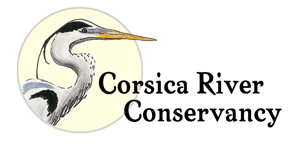Data on underwater grasses provide two important functions–they can tell us about improvements in habitat and can also indicate areas where pollution and other factors continue to negatively impact water quality. The annual underwater grasses survey, conducted by the Virginia Institute of Marine Science and reported here https://news.maryland.gov/dnr/2024/07/31/maryland-reports-steady-underwater-grass-abundance-in-chesapeake-bay-for-2023/ found that overall, Bay grasses had held steady.
Submerged aquatic vegetation (SAV), also known as underwater grasses, play a critical role in maintaining the health of the Chesapeake Bay ecosystem. These grasses absorb and filter out nutrients and sediment, reduce shoreline erosion, and provide habitat and protection for important species such as blue crabs and largemouth bass. They support and sustain migrating waterfowl, and mitigate climate impacts.
CRC volunteers work with ShoreRivers on SAV monitoring in the Corsica, Chester, and elsewhere in the Bay. Volunteers surveying the Mill Stream Branch of the Corsica River found 4 species of grasses, including a large bed of Sago pondweed.





